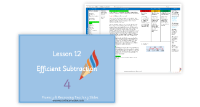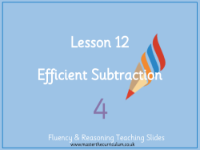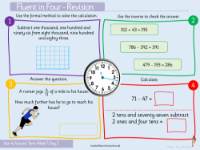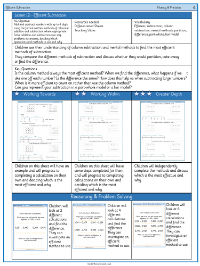Addition and Subtraction - Efficient subtraction - Planning
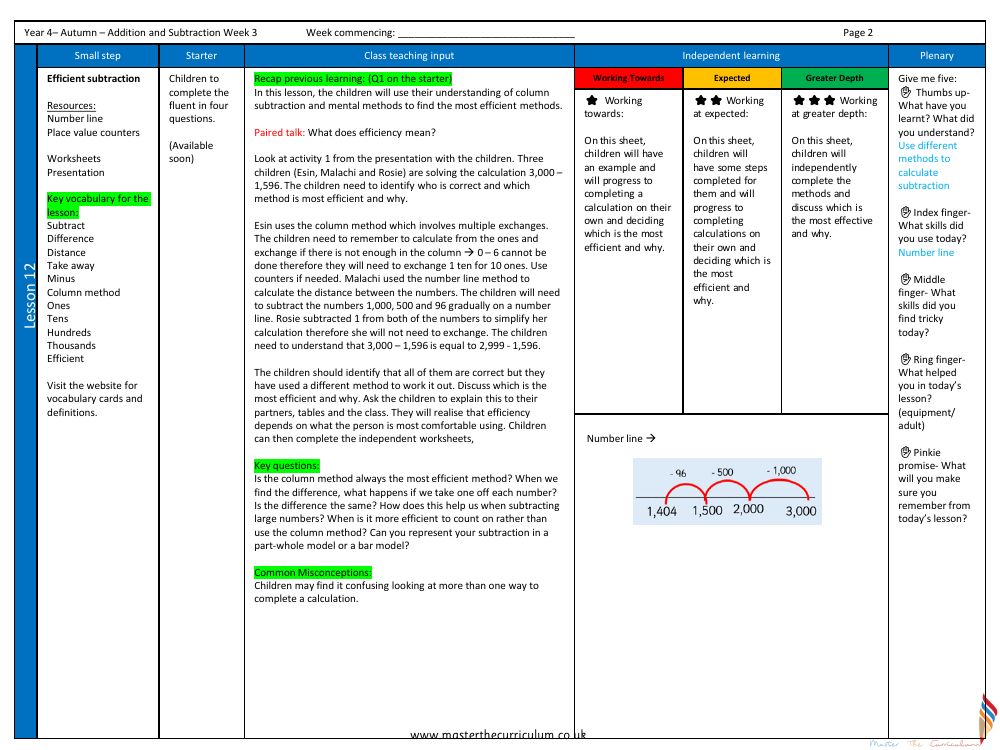
Maths Resource Description
In the third week of the Autumn term, Year 4 students delve into 'Efficient subtraction' as part of their Addition and Subtraction curriculum. The lesson aims to enhance their understanding of subtraction by exploring various methods to find the most effective approach. The students start with a review of column subtraction and mental strategies. They then engage in paired discussions to define efficiency in the context of subtraction. Utilising resources such as number lines and place value counters, alongside worksheets and a presentation, the children are introduced to different techniques. One example involves comparing the column method, which may require multiple exchanges, to the number line method, where distances between numbers are calculated incrementally. Another strategy showcased is adjusting both numbers in a subtraction problem to simplify the calculation, thus avoiding the need for exchanges.
The lesson continues with a practical exercise where the children examine three peers’ methods of solving the subtraction problem 3,000 minus 1,596. They are tasked with identifying not only the correct answers but also the most efficient method, understanding that efficiency can be subjective and based on individual comfort with the technique. The lesson encourages critical thinking with key questions about the column method's efficiency, the effect of adjusting numbers on the difference, and the circumstances where counting on is more efficient than column subtraction. Students are also prompted to consider alternative representations of subtraction, such as part-whole or bar models. The session concludes with a reflective 'Give me five' activity, where students articulate what they have learned, the skills they used, and any challenges they faced. Differentiated worksheets cater to varying levels of proficiency, guiding students from working towards expectations to achieving greater depth in understanding efficient subtraction methods.

